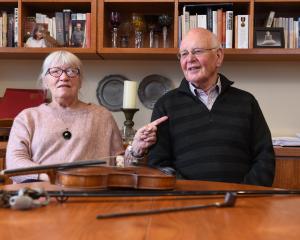
Oregon State University Marine Mammal Institute associate director and geneticist Prof Scott Baker is in Dunedin, researching Otago Museum’s collection of jewellery made from teeth — specifically, dolphin teeth.
He is in New Zealand for two months, making an official record of all the dolphin-teeth jewellery and individual specimens held by museums around New Zealand.
"We don’t know much about them. Often we don’t know the species of dolphin they came from, some of them are conspicuously different while others are very subtly different, and they’re a record of pre-European practices of dolphin hunting."
Prof Baker said dolphins were an object of veneration among many Pacific Island nations, and their teeth held mana and were a source of currency.
He said the practice was first recorded when early European explorers visited, but it was not known when it began or where it originated from.
The practice of dolphin hunting and using their teeth for jewellery or currency still continues in places such as the Solomon Islands today.
"It’s a very sophisticated form of hunting, where they use sound to drive social groups of dolphins into the beach and then, unfortunately, they get slaughtered.
"Primarily, they use the teeth as jewellery, local currency and for bride price — a situation where the groom and his family make a wedding payment [using dolphin teeth] to the bride’s family.
"I’m trying to create a better record of the history of use of dolphin teeth and enduring objects of adornment among the people of Oceania, and any evidence of cultural exchange of those practices."
Eventually, he hoped to use genetics to identify the species, and in some cases, the actual geographic origins of the teeth.
"The origins — how long it’s been a practice — is still a bit unclear."












